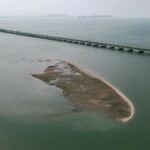Executive Summary
This study analyses the medical devices industry value chain and mapping in Penang. In particular, the objectives are:
(1) to identify and classify the companies in Penang’s medical device industry ecosystem based on their different product segments (in the categories of Disposables, Surgical Instruments, Therapeutic Devices, Diagnostic, Parts and Others); (2) to map the business activities over time, and the positioning of medical devices companies in the value chain in Penang; (3) to identify the opportunities and challenges for Penang’s medical devices upgrading; and (4) to provide recommendation for the medical devices industry development in Penang.
Penang is soon marking its half-century industrial development experience since the establishment of Bayan Lepas Free Trade Zone in 1972. Electrical and electronics (E&E) continue to remain a major driver of the state’s investments (54% of total approved investments in 2014-2018) and industrial activities, and the state has experienced diversification in its industrial activities, with one major segment being the medical devices manufacturing. Six of the world’s top 25 medical devices manufacturers have operations in Penang, and Penang has established itself as a destination of choice for the orthopaedics and cardiovascular product segment.
On this note, identification and understanding of the current state of the manufacturing value chain in medical devices industry, and of how this industry evolves become necessary. Therefore, it is important to provide better clarity on the stage of the value chain in Penang’s medical devices industry, where this will impart useful information to current and future industry players on the ecosystem available in Penang.
In terms of analytical framework, medical devices companies in Penang are identified from the International Trade Centre (ITC) data. The Harmonized Commodity Description & Coding System (HS) codes are used to identify the medical device products based on classification by Bamber and Gereffi (2013) and Torsekar (2018). HS codes used by Malaysia External Trade Development Corporation (MATRADE) for the identification of medical devices trade were obtained and compared.
Companies which are only involved in trading activities and do not manufacture, trading companies, and medical suppliers are filtered from this study, based on systematic tracking on industry directories (MIDA, AMMI) and company websites. Following the identification of companies within the medical devices industry, these companies are grouped according to the product segments and value chain involvement. This mapping allows a view on the companies in each sector and their clustering.
One major drawback in this study is the limited state-based firms and industry data on trade and manufacturing. To gather information on Penang’s medical devices upgrading within the value chain, expert interviews were conducted to understand the opportunities and challenges within the industry. Some anecdotal evidences were used to support stakeholders’ opinion where state-level data are scarce and inadequate.
Penang is undeniably an important medical devices manufacturing hub in Malaysia, contributing about 77% of the total gross output for the manufacture of irradiation, electro medical and electrotherapeutic equipment, and about 22% of the total gross output for the manufacture of medical and dental instrument and supplies, respectively.
Around 30 companies are identified from International Trade Centre (ITC) data. Large concentration of firms is in the product categories of disposables, surgical instruments and therapeutics. High foreign firms’ concentration was observed in the surgical instruments and therapeutic segments. Meanwhile, there is more observable concentration of local firms for disposables largely due to the presence of firms in the latex-based industries (makes up about 33% of the firms in disposable category). Some products that are not in Penang’s manufacturing landscape includes product segments in in-vitro diagnostic (IVD) (HS Codes 3821, 3822). Many Penang companies are also involved in medical devices contract manufacturing, especially in terms of plastic-based and metal-based products.
It is noticeable that similar to the investment promotion and industry development of other industries in the state in general, Penang adopts a FDI-driven export-oriented strategy for the medical devices industry.
The beneficiaries of the economic spillovers of medical devices firms’ investments in Penang include suppliers in terms of metal, plastic and chemicals, contract packaging, contract sterilization, medical trading companies, and other related electrical and electronics companies involved in medical devices manufacturing industry.
The highest concentration of companies in Penang are involved in components manufacturing, assembly and production (described as low value-added segment). Companies such as B. Braun and Ambu have established their centre of excellence (COE) while Vigilenz and CCB Medical Devices have established R&D capacity (described as high value segment). With more global OEMs focusing on investment in innovation and advanced technologies, specialized contract manufacturers in Penang can gain traction through engineering capabilities and the ability to scale capacity. Localisation by multinationals to local suppliers appears to be relatively more challenging than other industries due to the stringent medical devices standard and capability to scale by local companies.
A major consensus among stakeholders is that the state should look into further solidifying medical devices industry in Penang given its resilience to economic uncertainty and less cyclical nature of the industry. Tapping on Penang and Malaysia’s accumulated experience and residual intelligence in the industry, Penang continues to show potential for growth as the medical devices sector destination of choice. However, at the same time, the state is facing increased competition from other investment destinations, slower upgrading of firms in product and process, and increased challenges in the hiring of industry-ready talent.
Some policy recommendations for Penang’s medical devices industry moving forward includes (1) Product upgrading and diversification, (2) Process upgrading, (3) Trade and technology promotion, (4) Promotion of further backward and forward linkages within the industry, (5) Flow and clarity of information, and (6) Academia-industry dialogue and collaboration.
Managing Editor: Ooi Kee Beng, Editorial Team: Alexander Fernandez and Nur Fitriah (designer)
You might also like:

Movement Control Measures against Covid-19: Mobility Changes in Penang and Malaysia

Strengthening Food Security in Light of Covid-19

Covid-19: Extra Support Needed for Refugees in Malaysia and the Region

Support for Childcare Services in Penang for Broad Socioeconomic Benefits

Protecting Penang’s Marine Biodiversity: Establishing the Middle Bank Marine Sanctuary (MBMS)


